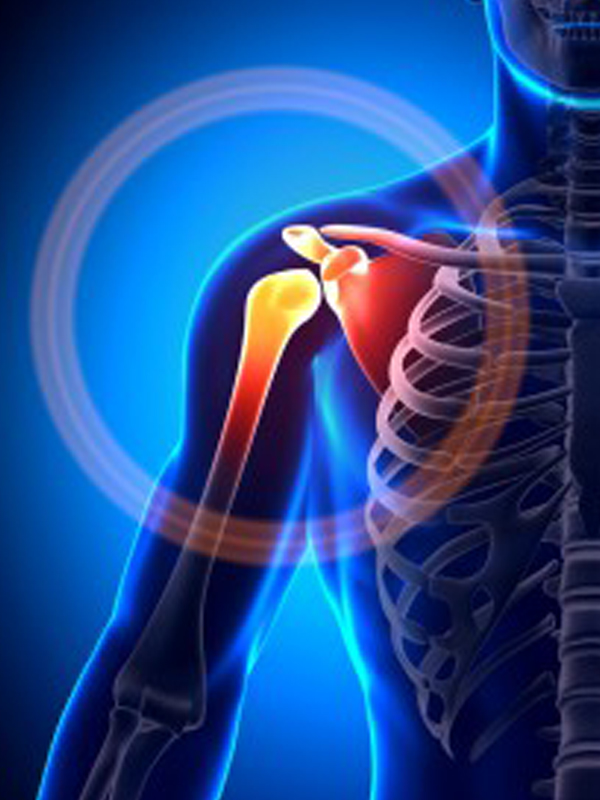Shoulder Pain
Arthritis (Osteoarthritis) of the Shoulder
Osteoarthritis, also known as degenerative arthritis or degenerative joint disease, is a common condition which is caused by gradual breakdown of the cartilage in the joint. Cartilage is a flexible connective tissue which protects the ends of bones in joints and acts as a shock absorber.
Cartilage breakdown is most commonly caused by aging or normal wear and tear of the joints. Joints that bear most of the body’s weight such as the hip and knee are most commonly affected by osteoarthritis, but the condition can affect any joint of the body, including the shoulder.
Risk factors for osteoarthritis include advanced age, traumatic injury, high levels of activity, and genetic predisposition.
In severe osteoarthritis, the cartilage can wear very thin or become absent, often referred to as “bone on bone” arthritis. Rubbing of the bones can cause inflammation of the joint, as well as bony bumps on the edge of the joint which are called bone spurs (or osteophytes). The joint can become stiff and painful, and is often accompanied by a sensation of grating or grinding with movement.
Treatment options depend on the severity of the arthritis and the degree of symptoms. In the early stages, pain is generally well managed with anti-inflammatory medications, icing, and physical therapy. In more advanced cases, treatments include consideration for cortisone injections, Platelet Rich Plasma (PRP), and Bone Marrow Concentrate Stem Cell Therapy.

